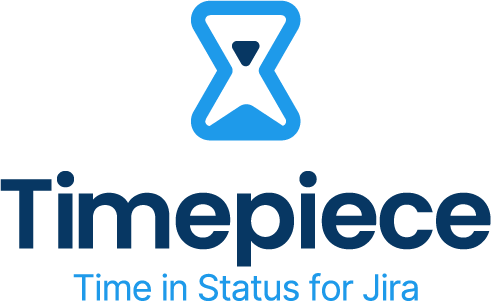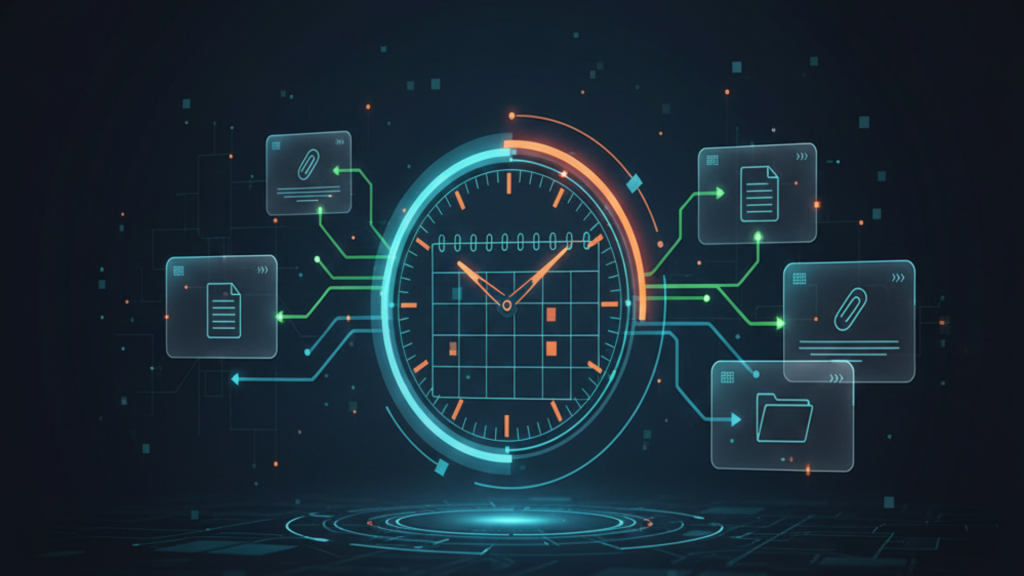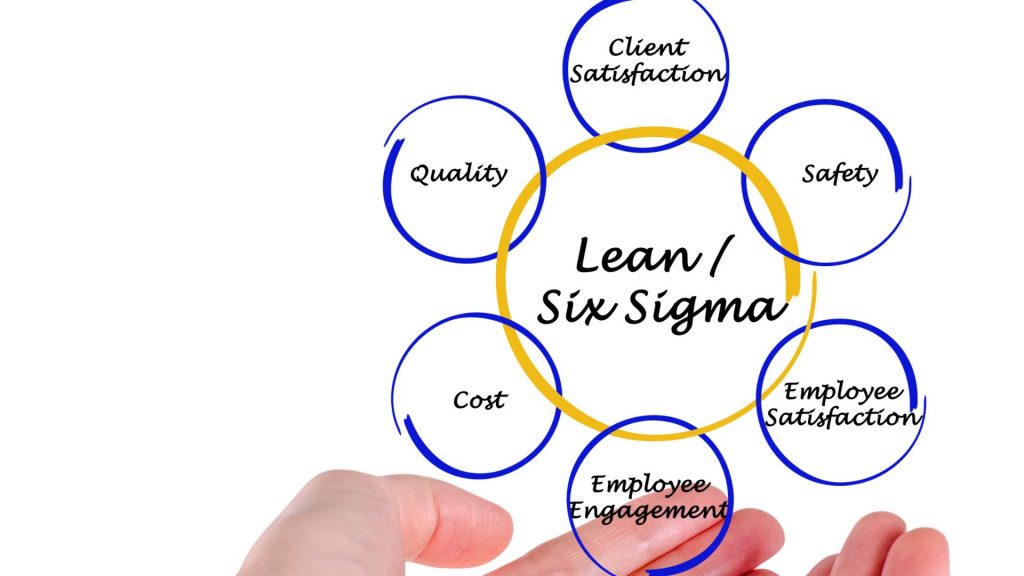For many development teams, the word ‘Agile’ brings to mind freedom and speed. To build a working software; teams adapt, collaborate and focus. But there’s an important struggle that can make ‘Agile’ feel like a paradox: reporting. In the ideal world, reporting should be a simple compass to guide the team. But, without proper tools and guides, teams can spend hours manually updating Jira tickets, struggling with spreadsheets and complicated process. And this make an opposite of the flexibility Agile promised. The extra work reporting needs slows thing down and shift focus from delivering value to simply feeding the reporting machine.
However, this conflict arises from a misunderstanding of reporting’s true purpose. Effective Jira reporting is not an administrative burden; it is a strategic function that underpins the core principles of Agile. It provides the essential visibility and data required for continuous improvement, data-driven decision-making, and enhanced team collaboration. The objective is not merely to generate charts and graphs, but to improve a shared understanding that drives meaningful action and propels the team forward.
This guide outlines five interconnected strategies to transform Jira reporting from a manual, reactive task into an automated, insightful, and strategic capability. This framework presents a maturity model, starting with the foundational cleanup of data and processes and culminating in using artificial intelligence to achieve ultimate efficiency. By adopting these strategies, teams can resolve the reporting paradox, turning it into a powerful engine for delivering value faster and more effectively.
5 Strategies to Boost Agile Reporting in Jira
Reporting in Agile project management should be a source of insight, not a hassle. These five powerful strategies can help your team save time, increase visibility, and make reporting a valuable part of your workflow.
Strategy 1: Let Automation Handle Recurring Reports
The end of a sprint often means a scramble to manually pull together reports. You can eliminate this by setting up automation rules in Jira. By using triggers tied to key events, like a sprint closing or an issue changing status, you can have reports generated and distributed automatically. This means sprint summaries, release notes, and other updates are shared instantly, keeping everyone aligned without any manual work or follow-ups. This foundational step is the key to freeing up the team’s capacity to focus on higher-value activities.

Strategy 2: Create Consistency with Pre-Built Templates
Starting a report from a blank page is a recipe for missed details and inconsistencies. Using pre-built templates for common reports like Sprint Reviews or Bug Reports ensures everyone delivers the right information in the right way. These templates can include advanced formatting like tables, filters, and smart values, making them not just consistent but also easier to read and more insightful for any audience.
Strategy 3: Standardize and Map Jira Fields for Accurate Data
When different teams use Jira fields in different ways, the resulting reports can be misleading. Smart field mapping solves this by creating a single source of truth. It allows you to dynamically pull data from various fields, standardize labels and statuses, and filter for only the information that matters. This level of precision guarantees that your reports are accurate and comparable across all teams and projects, no matter how complex your setup is.
Strategy 4: Get the Big Picture with Real-Time, Cross-Project Dashboards
Manually merging data from different Jira projects is a slow, error-prone task that can create blind spots. Cross-project dashboards eliminate this by consolidating data in one place, offering a real-time view of metrics like team velocity and bug trends without manual exports. By integrating with tools like Slack and MS Teams, these dashboards can automatically deliver timely updates to the right channels.
Strategy 5: Save Time with AI-Powered Summaries
Turning raw Jira data into a clear, concise summary is a major time drain for any team. AI-powered summaries automate this process by analyzing issues, epics, and sprints to instantly highlight key updates and potential blockers. This provides ready-made content perfect for retrospectives, leadership updates, and release notes. It eliminates the need for manual writing and editing, freeing up your team’s mental energy while ensuring communication is always clear and consistent.
While Jira provides a powerful platform for managing work and offers some native reporting capabilities, achieving the full potential of this maturity model often requires extending its functionality. To put these strategies into action, we need powerful apps. This is exactly where we can highlight two Atlassian Marketplace apps: Timepiece – Time in Status for Jira and Automated Release Notes and Reports.
Timepiece – Time in Status for Jira: Advanced Jira Time Tracking & Reporting
Timepiece – Time in Status for Jira by OBSS is an advanced reporting and time tracking app that transforms raw Jira data into actionable insights. Its great features help identify bottlenecks, optimize workflows, and increase team efficiency.
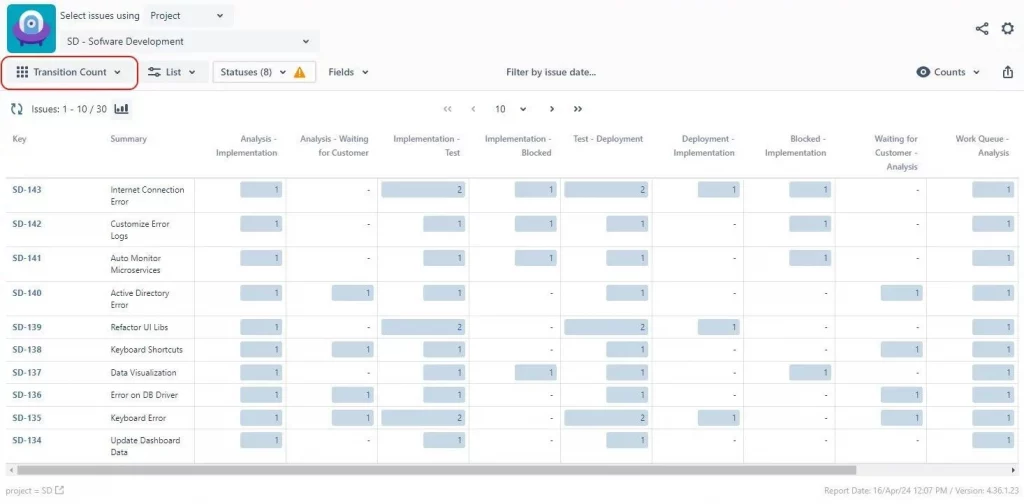
Unlock Core Process Metrics
Go beyond basic reporting to track the metrics that truly define your team’s agility. Timepiece allows you to effortlessly measure essential indicators like Cycle Time, Lead Time, Time in Status, Resolution Time, Assignee Time, and Issue Age, giving you a clear baseline for performance.
Advanced Performance and SLA Tracking
Dig deeper into your workflows to uncover hidden inefficiencies. You can measure the time between any two statuses to monitor SLA-like metrics, track reopen counts to assess quality, and even calculate how long an issue remains in a specific state for any custom field.
Analyze Trends and Forecast Performance
Spot patterns and make data-driven decisions by grouping your data daily, weekly, monthly, or yearly. With trend analysis, you can visualize performance over time, identify recurring issues, and more accurately forecast future work.
Get the Full Picture with Aggregate Data
Consolidate data from across multiple projects into powerful aggregate reports. Calculate sums, averages, medians, and standard deviations to understand the big picture and compare performance across different initiatives or teams.
Optimize Workload and Team Balance
Use the Assignee and Group Duration reports to see exactly how much time issues spend with specific users or teams. This insight is crucial for balancing workloads, analyzing team performance, and ensuring resources are allocated effectively.
Ensure Accuracy with Custom Calendars
A report that counts weekends and public holidays as part of an issue’s cycle time is not just inaccurate; it’s misleading. Achieve precise calculations by creating custom calendars that define your team’s specific working hours, days, and holidays. For global teams, Timepiece excels by supporting multiple time zones, allowing you to generate accurate reports.
Automate Delivery with Scheduled Reports & Alarms
Put your reporting on autopilot and focus only on what needs your attention. The Scheduled Reports & Alarms feature lets you automatically generate and distribute your key reports. You can select and save Parameter Sets, decide how often you want them, and who needs to see them. Once your report is generated, you can get the latest report and data without any extra effort.
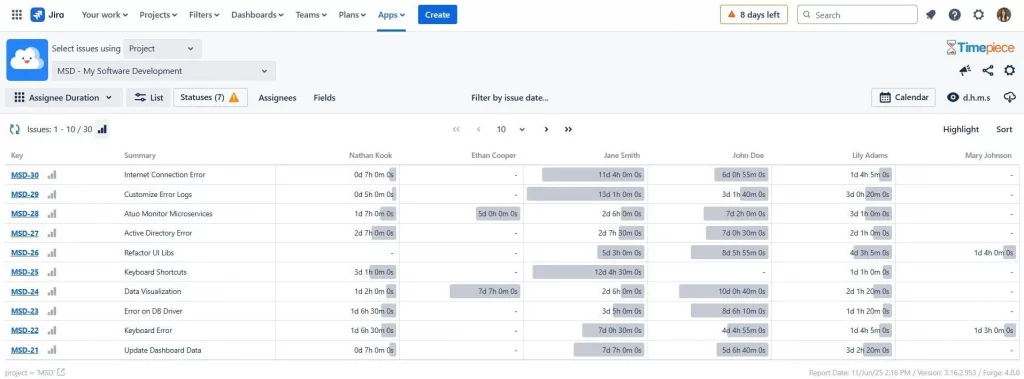
Also, Alarms functionality helps you spot potential issues before they become big problems. You can set up tasks to run only when specific conditions are met. Reports can be shared securely via email, Slack, or Microsoft Teams, ensuring stakeholders get the insights they need, when they need them.
Integrate Seamlessly Across Your Entire Toolchain
Timepiece is built to work within your existing ecosystem. You can display dynamic reports directly on Jira dashboards and issue screens for immediate visibility. For deeper analysis, it offers ready-to-go integrations with popular BI and data tools, including eazyBI, Power BI, Excel, and Google Sheets, all powered by a robust REST API for any custom connections.
Automated Release Notes and Reports
By giving stakeholders correct, up-to-date knowledge and removing manual work, the Automated Release Notes and Reports app for Jira increases Agile retrospectives and reporting.
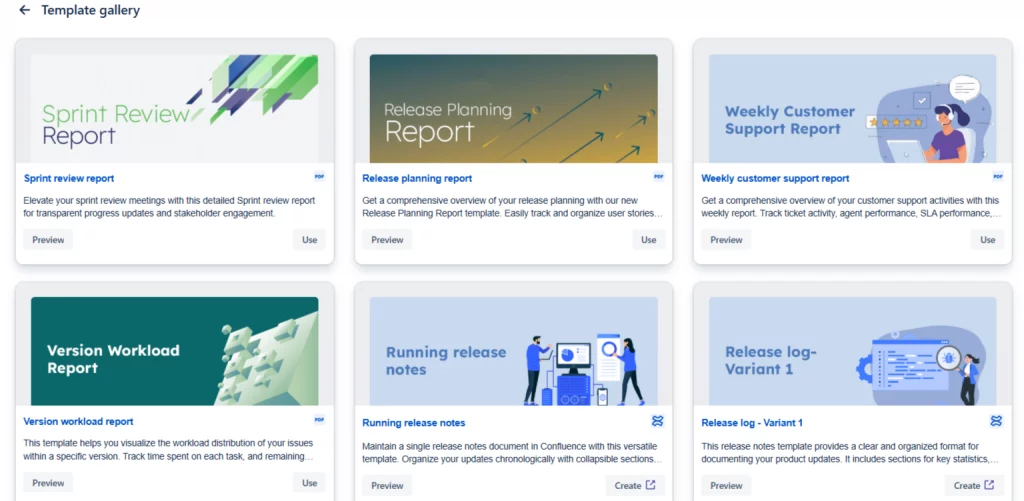
ARNR is ideal for busy Agile teams because it simplifies the creation and delivery of reports across sprints, releases, and other timeframes. It includes:
- Automated report generation based on sprint completion, release creation, or custom rules.
- A comprehensive template gallery for Sprint Review, Bug Resolution, and Pre-release Readiness reports.
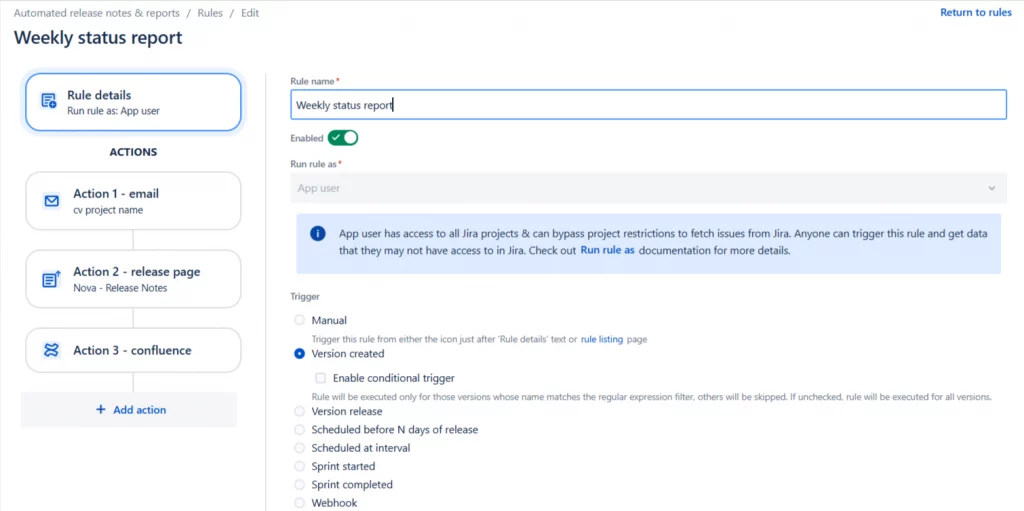
- Smart Jira field mapping that automatically rescues information from custom and default fields
- Support for multi-project reporting that is excellent for cross-functional or scaled Agile setups.
- Triggers are scheduled and event-driven to assure constant and timely reporting.
- Real-time report sharing can be done through the seamless integration of Slack and MS Teams.
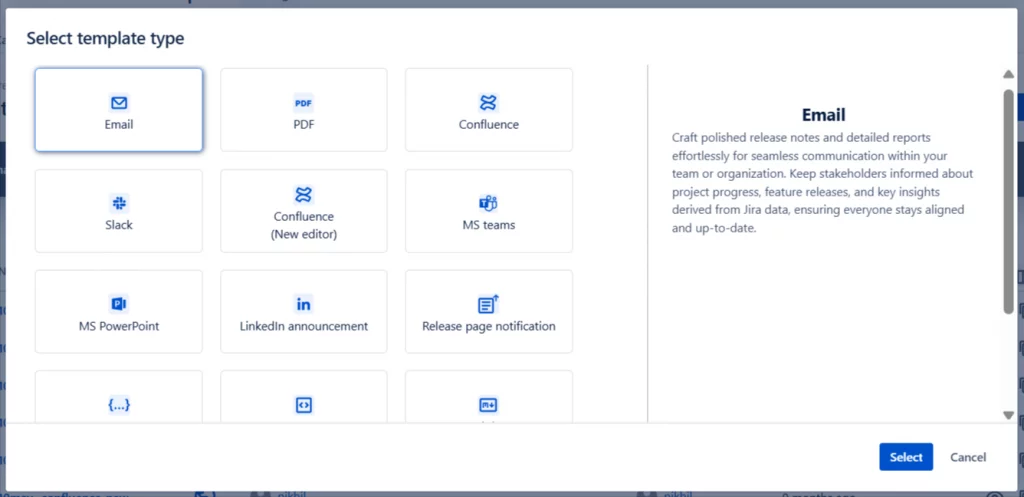
- Custom layouts using tables, filters, smart values, and sections
- AI-generated summaries that deliver precise and user-friendly insights.
Transforming Your Agile Practice: A Final Word on Strategic Reporting
The journey from the frustrating “Agile Reporting Paradox” to a state of strategic clarity is a transformative one. It begins by recognizing that reporting is not an administrative burden to be endured, but a strategic asset to be leveraged. By progressing through the maturity model—from foundational automation and standardization to full visibility and AI-powered foresight, teams can fundamentally change their relationship with data.
The ultimate goal is not simply to “do reporting” better. The goal is to use the insights gained from reporting to foster a culture of continuous improvement, enhance predictability, and accelerate the delivery of value to customers. The strategies and tools outlined in this guide are the mechanisms to achieve that objective. They are designed to remove friction, eliminate manual effort, and resolve the ambiguity that so often leads to delays.
By embracing this new paradigm of strategic reporting, organizations can empower their teams to focus on what they do best: the creative, innovative, and high-impact work of building great products. It is about shifting from a culture of obligation, where reporting is a task, to a culture of empowerment, where data is a trusted partner in the relentless pursuit of excellence.
The first step is to assess where your team falls on the maturity model and explore the tools that can help you advance to the next stage.
To learn more about Timepiece – Time in Status for Jira, click here.
To learn more about Automated Release Notes and Reports for Jira, click here


